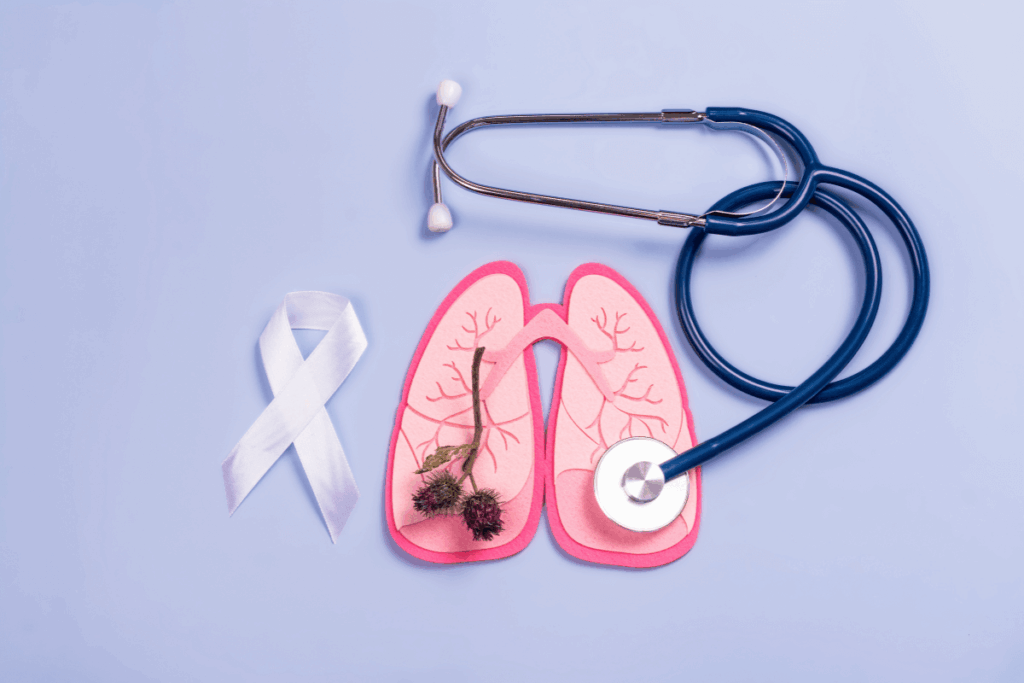
In the U.S., a new case of lung cancer is identified every two minutes, and 361 people die from it daily. Survival rates have increased, though lung cancer is a leading cause of cancer deaths in men and women. The national five-year survival rate has increased to 29.7% from 26% over the last 5 years. Recent cuts to the National Institutes of Health (NIH), the Centers for Disease Control and Prevention (CDC), and reductions in healthcare insurance threaten this progress.
The State of Lung Cancer report from the American Lung Association provides a comprehensive analysis of lung cancer in the nation. It highlights the significance of early detection by screening, advancements in the research and treatment, and access to the biomarker test. It helps healthcare professionals to choose personalized therapies. The report highlights the significant state-by-state differences and continuous racial disparities in diagnosis and outcomes.
The U.S. Preventive Services Task Force extended lung cancer screening recommendations to cover individuals aged 50 to 80 years with a minimum of 20 pack-years of smoking history in 2021. This change increased eligibility specifically for women and Black Americans. About 18.2% of eligible individuals were screened in 2022. Early detection improves the survival rate. 5-year survival rates reach 65% when lung cancer is detected early, but are reduced to 10% when detected late.
The report examined ethnic and racial differences for the 6th consecutive year. People of color are less likely to be diagnosed early, undergo surgery, or get any treatment. They experience a lower survival rate than white Americans. It is essential to address these inequities and improve the national results.
Approximately 227,000 Americans are diagnosed with lung cancer, with different variations by state, every year. Utah has the lowest incidence rate, and Kentucky has double the rate. The national rate of new cases has reduced by 13% over the last 5 years. This reduction reflects delayed diagnoses during the COVID-19 pandemic. Smoking, air pollution, radon, and second-hand smoke are major risk factors. Prevention strategies like smoke-free air laws, tobacco taxes, and radon mitigation are important to reduce incidence.
The national five-year survival rate is 29.7%. Rhode Island has the highest rate of 37.6% and Alabama has the lowest rate of 22.7%. Only28.1% of lung cancers are diagnosed early, and 20.7% of patients get surgical treatment, which is the best option for early-stage disease. 21% of patients get no treatment because of cost, access, or a lack of awareness. These rates have remained the same in recent years.
Biomarker testing plays a critical role in detecting genetic or molecular indicators that guide targeted treatments. About 17 states need full insurance coverage for a comprehensive biomarker test. Twenty-eight states and Washington, D.C., have no coverage mandates. Expanding access to this test can significantly improve survival outcomes.
Lung cancer screening with lower-dose CT scans can reduce mortality by 20% but screening rates remain low. Rhode Island leads with a 31% screening rate, and Wyoming lags at 9.7%. Elevating participation in high-risk populations can save thousands of lives.
Prevention remains the most effective defense against lung cancer. About 80 to 90% of cases are caused by tobacco use. Secondhand smoke and radon exposure are also major risk factors. About 156 million Americans live in areas with unhealthy air, which increases the risk.
Although there has been significant improvement, the State of Lung Cancer report emphasizes the necessity for ongoing efforts. Policymakers must encourage screening and biomarker testing, increase access to affordable treatment, and address racial and geographic inequities to combat lung cancer effectively. Every state can contribute to lowering the death rate from lung cancer and saving more lives by stepping up efforts at early identification and prevention.
Reference: American Lung Association. State of Lung Cancer | Key Findings. Published November 3, 2025. Accessed November 12, 2025. State of Lung Cancer Key Findings











